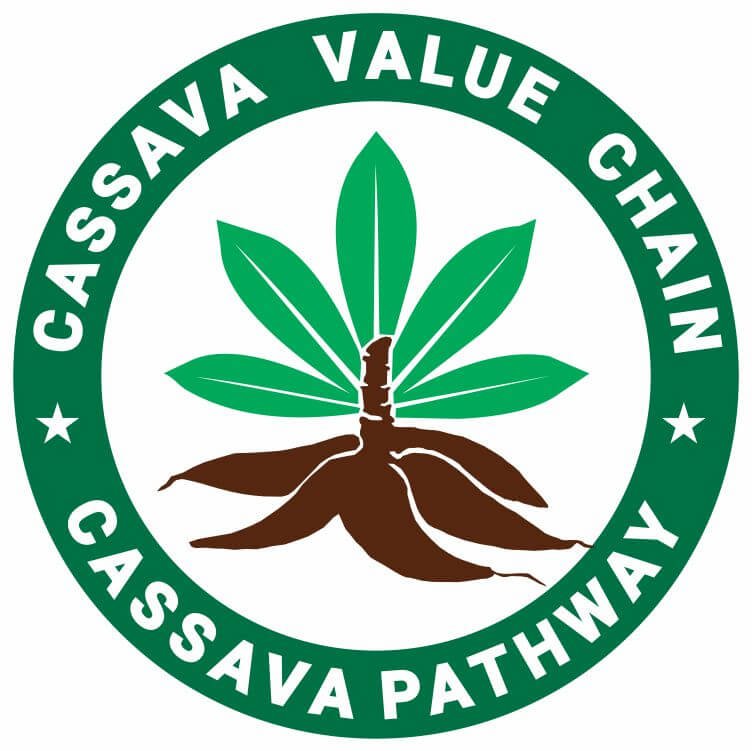Nutrition facts of cassava bread reveal its carbs, calories, fiber, and micronutrients, helping you understand its role in your diet.
When you enjoy cassava bread, you are tasting more than a simple staple.
From flatbreads to loaves and Caribbean specialties, each type has its own texture and flavor while sharing the same base ingredient.
Cassava bread is rich in carbohydrates, making it a strong source of energy, while protein and fat remain low.
It also provides small amounts of vitamins, minerals, and fiber, supporting your daily nutrition.
Knowing the nutritional content helps you make informed choices about portions and meal combinations.
Whether you are pairing it with proteins, vegetables, or spreads, understanding calories, macronutrients, and micronutrients in cassava bread lets you include it in your diet confidently while appreciating its role in global cuisines.
Table of Contents
- Cassava Bread Macronutrient Profile
- Micronutrient Content
- Fiber Content in Cassava Bread
- Calories and Serving Sizes
- Country Specific Nutritional Notes
- Summary Table of Nutritional Facts
Cassava Bread Macronutrient Profile
Cassava bread provides energy through its macronutrients, mainly carbohydrates, while offering small amounts of protein and fat.
Understanding these nutrients helps you include it wisely in your meals.
Carbohydrates
Carbohydrates make up the largest portion of cassava bread. A single serving can provide between 60 and 70 grams, giving you a solid energy boost.
If you rely on cassava bread as a staple, these carbs fuel your daily activities.
They also help keep you full when paired with protein or fiber-rich foods.
The type of cassava bread you choose, whether flatbread, loaf, or Caribbean variation, can slightly influence carbohydrate content.
Protein
Protein in cassava bread is present but limited, usually around 1 to 3 grams per serving.
Some recipes may include seeds, legumes, or other ingredients to raise protein content.
Knowing this helps you balance your meals, especially if you eat cassava bread frequently.
Pairing it with beans, cheese, or eggs can make your meal more satisfying and nutritionally complete.
Fat
Cassava bread is naturally low in fat, typically containing between 0.5 and 1.5 grams per serving.
Preparation methods, however, can change this. Baked versions keep fat minimal, while fried or oil-brushed breads increase fat content.
Understanding how cooking impacts nutrition lets you make choices that match your diet goals.
You can enjoy cassava bread while keeping your fat intake in check.
Related Posts
Cassava Flour Bread Recipes You Must Know
Micronutrient Content
Cassava bread provides more than energy. It contains vitamins and minerals that support daily bodily functions, making it a food you can include thoughtfully in your meals.
Different types, from flatbreads to Caribbean loaves, offer slightly varied micronutrient levels depending on preparation.
Thiamine B1
Thiamine in cassava bread helps your body turn carbohydrates into energy and supports nervous system health.
Including cassava bread in your diet contributes to your daily thiamine intake.
While it may not provide as much as fortified grains, it complements other foods to maintain energy and focus throughout your day.
Riboflavin B2
Riboflavin assists your body in breaking down proteins, fats, and carbohydrates.
Eating cassava bread adds a small but meaningful amount to your riboflavin intake.
This vitamin also supports skin health and keeps your cells functioning properly, making it a helpful addition to balanced meals.
Niacin B3
Niacin in cassava bread helps your body repair and maintain tissues. It also supports healthy skin and the digestive system.
Including cassava bread with other niacin sources, like legumes or grains, helps you meet your daily needs while enjoying a traditional staple.
Pyridoxine B6
Pyridoxine supports amino acid metabolism and the production of neurotransmitters that regulate mood and energy.
Cassava bread contributes to your daily intake, pairing well with protein-rich foods to maximize its nutritional value.
This combination helps you maintain energy and support overall metabolic processes.
Vitamin C
Cassava bread contains small amounts of vitamin C, an antioxidant that supports immune function and skin health.
While not a primary source, it adds value when combined with fruits and vegetables, helping you maintain overall wellness in your daily diet.
Minerals
Cassava bread provides potassium, calcium, magnesium, and iron. Potassium supports heart and muscle function.
Calcium helps maintain strong bones.
Magnesium is involved in hundreds of chemical reactions in your body, and iron helps transport oxygen in your blood.
Together, these minerals make cassava bread a modest but meaningful contributor to your mineral intake.
Fiber Content in Cassava Bread
Fiber in cassava bread varies depending on the type and preparation method.
Knowing the fiber content helps you make choices that support digestion and overall health while enjoying this staple food.
Flatbreads
Flatbreads made from fresh cassava keep some of the natural fiber from the root.
While their fiber levels are lower than whole grain breads, they still contribute to your daily intake.
Choosing minimally processed flatbreads lets you retain more of the plant’s original fibrous content and improves the way your body digests the bread.
Caribbean Cassava Breads
Certain Caribbean cassava breads use whole cassava flour, which preserves more fiber.
By including the whole root in the milling process, these breads offer slightly higher fiber content.
Eating them can support regular digestion and add a modest amount of fiber to your meals.
Fermented Cassava Breads
Fermentation can increase soluble fiber in cassava breads.
Beneficial bacteria break down complex carbohydrates, which may help digestion and reduce cholesterol.
Consuming fermented varieties supports gut health while contributing extra dietary fiber.
Pairing them with protein or vegetables makes for a more balanced meal.
Highly Processed Cassava Breads
Refined cassava flour used in highly processed breads removes much of the natural fiber.
These breads provide fewer benefits for digestion and fullness.
Checking ingredients and preparation methods helps you select versions that keep more fiber and improve your overall nutritional intake.
Calories and Serving Sizes
Calories in cassava bread vary depending on the type, size, and preparation method.
Knowing the calorie content helps you plan meals and enjoy this staple food while keeping your diet balanced.
Average Slice
A typical slice of cassava bread contains around 120 to 150 calories.
The exact count can change depending on ingredients such as fats or sweeteners used during preparation.
Paying attention to these details helps you include cassava bread in your meals without exceeding your calorie goals.
Full Flatbread
When you eat a full flatbread, the calories can rise to 400 to 500.
The thicker the bread or the more add-ins it contains, the higher the calorie content.
Recognizing portion size helps you manage energy intake while still enjoying traditional dishes.
Caribbean Cassava Bread
Caribbean variations of cassava bread usually range from 350 to 450 calories per serving.
Traditional cooking methods keep calories moderate, while commercial versions may contain extra ingredients that increase energy content.
Choosing homemade or lightly prepared options helps you control calories while savoring authentic flavors.
Homemade versus Commercial
Homemade cassava bread tends to have fewer calories because you control the ingredients.
Commercial breads may include oils, sweeteners, or preservatives, raising the calorie count.
Being aware of these differences allows you to make informed choices based on your dietary needs.
Country Specific Nutritional Notes
Cassava bread changes in texture, taste, and nutrition depending on where it is made.
Knowing the regional differences helps you choose the type that fits your dietary needs while enjoying authentic flavors.
Guyana
In Guyana, cassava bread is thin and slightly fermented.
A serving provides around 200 calories, mostly from carbohydrates.
The fermentation improves digestibility and can increase the availability of B vitamins like B1 and B2.
You can enjoy it with toppings or alongside meals, making it a light yet energizing choice.
Trinidad
Trinidadian cassava bread is drier and sometimes includes coconut milk.
One serving has about 210 calories, with fats from coconut adding richness.
The medium-chain triglycerides in coconut offer quick energy, making this bread a flavorful option that provides both carbohydrates and healthy fats.
Dominican Republic
In the Dominican Republic, cassava bread is known as casabe. It is thin and cracker-like, with roughly 130 calories per serving and minimal fat.
Its drying process preserves starches, making it an efficient source of carbohydrates.
Casabe is ideal if you want energy without excess calories, fitting well into lighter meals.
Jamaica
Jamaican bammy is thicker and often steamed or fried. One serving contains around 250 calories and is rich in carbohydrates.
Frying increases fat content and adds texture, giving you a satisfying and hearty bread.
Bammy works well as a side or with protein-based dishes for a filling meal.
Summary Table of Nutritional Facts
Below, we provide a detailed summary table detailing the essential nutritional facts of various types of cassava bread.
This table serves as a quick reference for readers interested in the macronutrients, calories, fiber content, vitamins, and minerals contained within each variant.
| Type of Cassava Bread | Calories (per 100g) | Carbohydrates (g) | Protein (g) | Fat (g) | Fiber (g) | Vitamins | Minerals |
|---|---|---|---|---|---|---|---|
| Traditional Cassava Bread | 330 | 78 | 1.5 | 0.5 | 3.2 | Vitamin C | Calcium, Iron |
| Fried Cassava Bread | 470 | 90 | 2.0 | 22.6 | 2.8 | Vitamin A | Sodium, Potassium |
| Baked Cassava Bread | 340 | 75 | 1.5 | 1.0 | 4.0 | B Vitamins | Magnesium, Phosphorus |
| Sweet Cassava Bread | 400 | 85 | 2.5 | 8.0 | 1.5 | Vitamin E | Iron, Folate |

Chimeremeze Emeh is a writer and researcher passionate about Africa’s most transformative root crop—cassava. Through his work at cassavavaluechain.com, he explores the entire cassava industry, from cultivation and processing to its diverse applications in food, health, and industrial use.
He also writes for palmoilpalm.com, where he shares his extensive experience and deep-rooted knowledge of palm oil, covering red palm oil, palm kernel oil, and refined products. His work there reflects his lifelong connection to agriculture and his commitment to promoting sustainable value chains in Africa.
Driven by curiosity and purpose, Chimeremeze aims to shed light on how cassava continues to empower communities, strengthen food systems, and link traditional farming wisdom with modern innovation.
